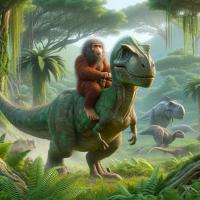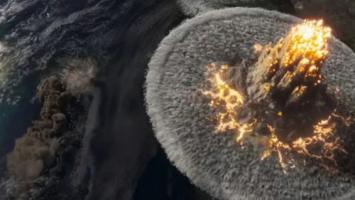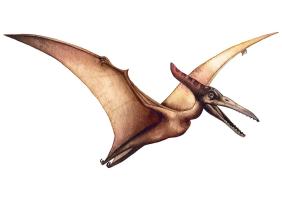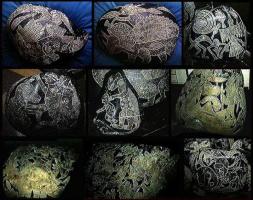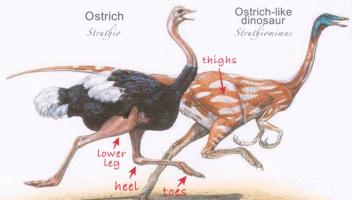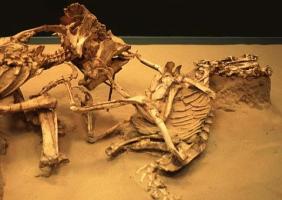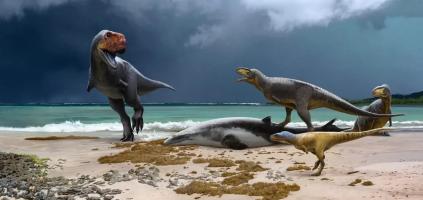The dinosaurs of Acambaro

In 1945 Waldemar Julsrud, a German immigrant and expert archaeologist, discovered clay figurines buried at the foot of Mount El Toro in Acambaro, near Guanajuato, Mexico.
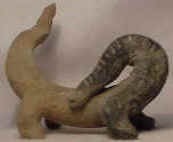
Near El Toro and on the other side of town, at Mount Chivo, over 33,000 ceramic figurines were discovered.
Artifacts found in the area were initially associated with the pre-classic Chupicuaro culture, dating back to 800 BC to 200 AD.
The authenticity of Julsrud's findings was called into question because the enormous collection included dinosaurs. Most archaeologists believe that dinosaurs have been extinct for 65 million years, and human knowledge of them is limited to the last 200 years. If this is true, it is not possible that man saw and depicted them 2,500 years ago.
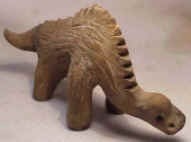
Between 1945 and 1946, the director of archeology of the Acambaro area, on behalf of the National Museum of Anthropology in Mexico City, was Carlos Perea. Mr Perea, in an interview, described the Julsrud excavations as unauthorized, as were many similar discoveries made by farmers in the area, but he had no doubt that the findings were authentic.
He acknowledged that he had examined figurines, including dinosaurs, from many different sites. He was present when excavations were officially carried out by the National Museum and the American Museum of Natural History.
Numerous figurines were found, including dinosaurs, which he described in detail.
In 1954 the Mexican government sent four renowned archaeologists to investigate. They chose a different, but still nearby, site and began meticulous excavations. At a depth of about two meters they found numerous examples of similar figurines, and concluded that Julsrud's discovery was authentic.
However, three weeks later their report declared the collection to be a fraud, due to the fantastical depictions of humans and dinosaurs together.
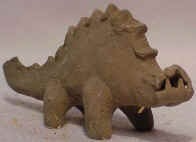
In 1955 Charles Hapgood, a renowned professor of anthropology at the University of New Hampshire, conducted an elaborate investigation that included extensive radiometric dating. He was accompanied by Earl Stanley Gardner, former District Attorney for the city of Los Angeles, California, creator of the Perry Mason character.
They demonstrated the unfoundedness of claims that Julsrud made the figurines by digging under the police chief's house, which had been built 25 years before Julsrud arrived in Mexico.
Another 43 specimens of the same type were found. The "Isotopes Incorporated of New Jersey" performed three radiocarbon tests, which indicated dates of 1640 BC, 4530 BC and 1110 BC. Eighteen specimens were subjected to thermoluminescent tests by the University of Pennsylvania, each of which indicated dates of approximately 2500 BC.
These results were later retracted when it was learned that some of the samples were dinosaurs.
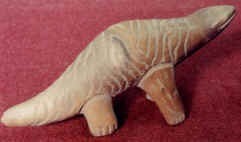
In 1990, an investigation was carried out by Neal Steedy, an independent archaeologist who earns his living through commissioned work from the Mexican government. He arbitrarily selected an excavation site considerably distant from that of Julsrud. Chard was found, but no statuette.
He then subjected some figurines from Julsrud's collection to radiocarbon tests, which indicated dating between 4000 and 1500 years ago.
He decided to ignore the results, stating that the figurines were too soft to last more than twenty years in the ground. He also ignored the fact that many of Chupicuaro's recognized pieces have the same consistency, and have been preserved very well.
Of course, some pieces from Julsrud's collection are baked beautifully.
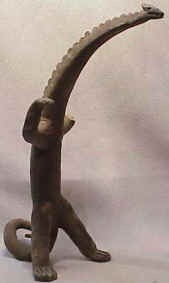
Steedy's attempts to refute Julsrud's collection actually achieve the opposite result: they effectively demonstrate the establishment's determination to defend evolutionary dogma in the face of the devastating implications of this extremely significant discovery.
The most obvious explanation for the hundreds of depictions of living dinosaurs discovered in Acambaro is that they didn't disappear that long ago.
These populations who lived 2500 years ago saw them!
It seems clear that these populations knew how a dinosaur looked like in life.









